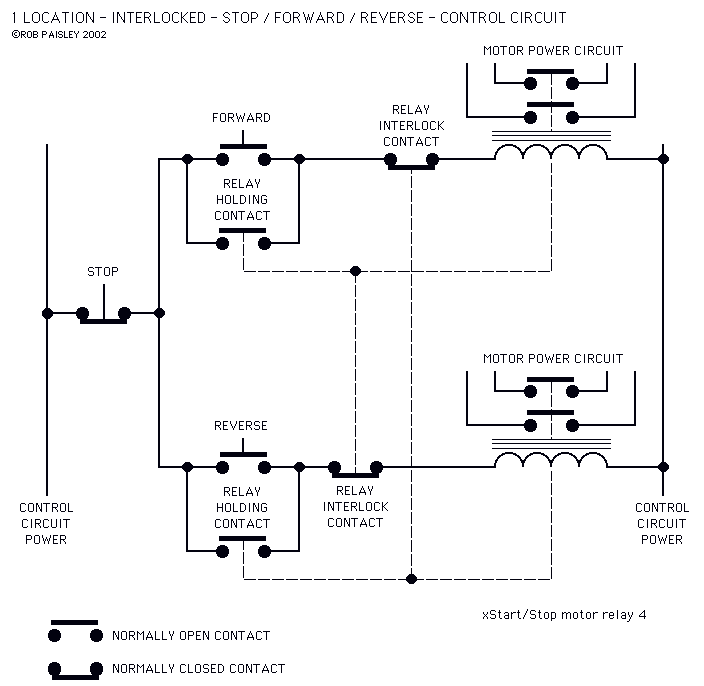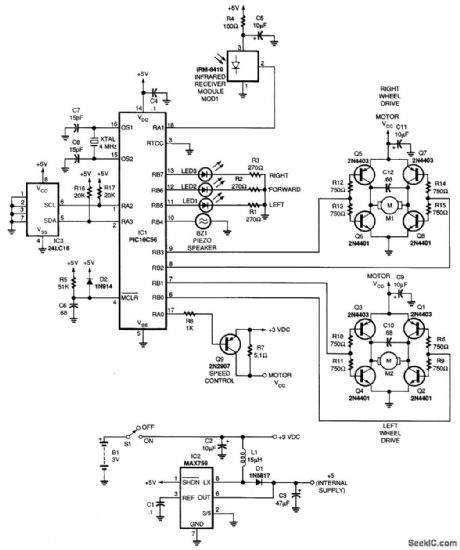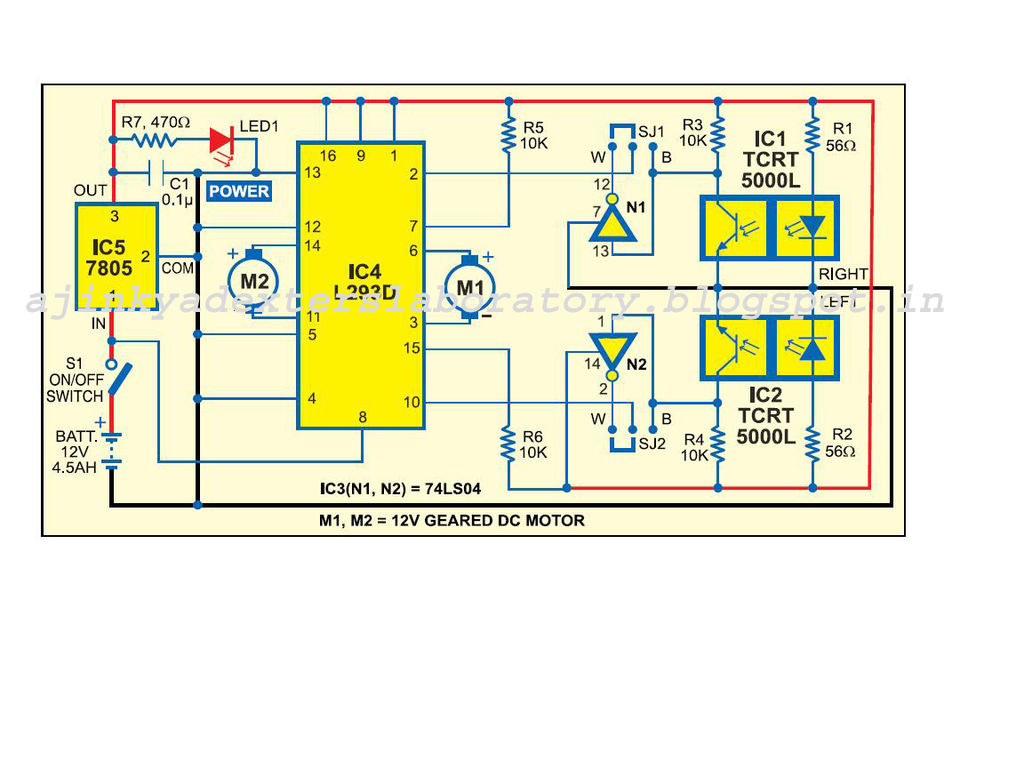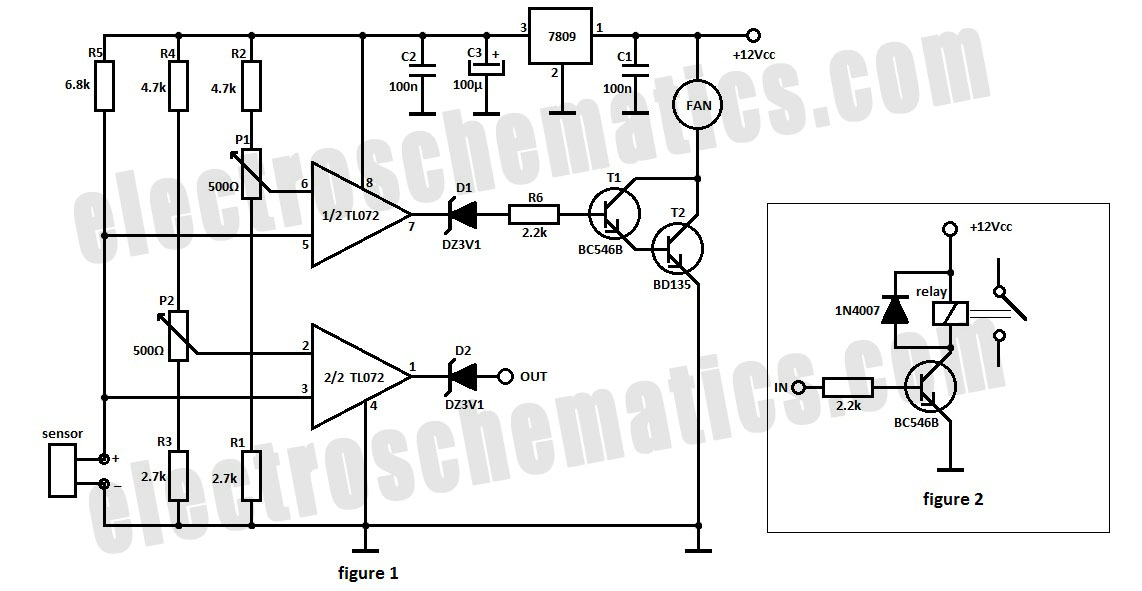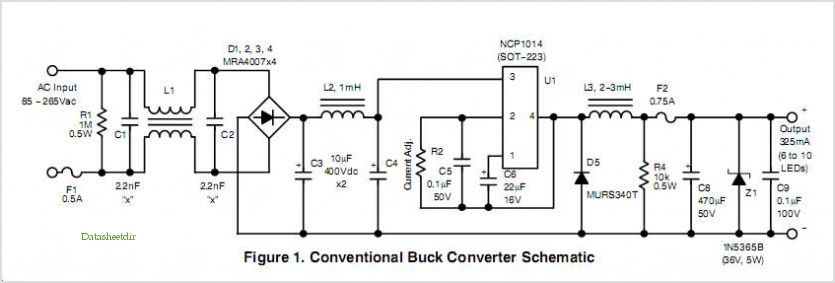
Mini-Drill Control
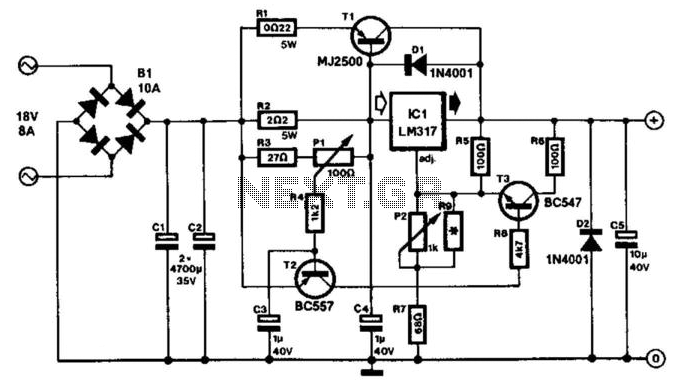
This circuit is designed for speed control of small DC motors commonly found in devices such as electric drills, which are utilized for precision engineering and drilling tasks. The behavior of these motors, typically permanent magnet types, resembles that of independently powered motors. Theoretically, the RPM of these motors is solely dependent on the applied voltage. The motor adjusts its RPM until the counter electromotive force (emf) generated in its coils equals the applied voltage. However, there is a voltage drop across the internal resistance of the motor, leading to a decrease in RPM relative to the load. In essence, an increase in load results in a greater voltage drop across the internal resistance, thereby reducing the RPM. This circuit compensates for the motor's internal resistance: as the current drawn by the motor increases, the supply voltage is automatically raised to counteract the RPM drop. The circuit employs an enhanced voltage regulator consisting of IC1 and T1, which can provide a significant output current (small drills typically draw between 2 to 5 A). The initial supply voltage, and consequently the RPM, is adjusted using P2. Due to the presence of emitter resistance R1, the currents through IC1 and T1 are related in a ratio determined by R1 and R2. This configuration allows the internal short-circuit protection of IC1 to indirectly safeguard T1. When the current exceeds a predetermined threshold, T2 activates, supplying base current to T3, which effectively places R5 in parallel with R6. This setup automatically increases the output voltage to counter any potential RPM drop. The threshold for this action is set by P1, enabling precise adaptation of the circuit to the specific motor in use. For applications involving only very small motors, the power supply components (transformer and bridge rectifier) can be conservatively rated. As a guideline, the current rating for the transformer secondary should be approximately 1.5 times the maximum DC output current.
This circuit serves as an effective solution for maintaining consistent RPM in small DC motors despite variations in load conditions. The use of a voltage regulator allows for dynamic adjustment of the output voltage, ensuring that the motor operates efficiently under varying operational demands. The design incorporates feedback mechanisms through the use of transistors and resistors, which facilitate real-time monitoring and adjustment of the current flowing through the motor.
Key components such as IC1, T1, and T2 are crucial for the regulation process. IC1 functions as the primary voltage regulator, while T1 acts as a pass transistor, allowing for higher current handling capabilities. T2 serves as a switch that activates additional current paths when the load increases, ensuring that the motor receives sufficient voltage to maintain its performance.
The resistors R1 and R2 are strategically placed to create a feedback loop, allowing for proportional control of the output voltage based on the motor's current draw. This feedback loop is essential for the stability and responsiveness of the circuit, enabling it to react quickly to changes in load conditions.
Furthermore, the circuit's adaptability to different motor specifications is a significant advantage, allowing for fine-tuning of the RPM settings via potentiometer P1. This feature is particularly beneficial in applications where precision is critical, as it enables users to optimize the motor's performance for specific tasks.
Overall, this speed control circuit exemplifies effective design principles in electronics, providing a reliable and efficient method for managing small DC motor operations across various applications. This circuit is intended as a revolution control for small dc motors as fitted, for instance, in small electric drills ( such as used for precision engineering and for drilling boards, among others). The behavior of these motors, which are normally permanent magnet types, is comparable to that of independently powered motors. In theory, the rpm of these motors depends solely on the applied voltage. The motor adjusts its rpm until the counter emf generated in its coils is equal to the applied voltage.
There is, unfortunately, a drop across the internal resistance of the motor, which causes the rpm to drop in relation to the load. In other words, the larger the load, the larger the drop across the internal resistance and the lower the rpm.
* This circuit provides a kind of compensation for the internal resistance of the motor: when the current drawn by the motor rises, the supply voltage is increased automatically to counter the fall in rpm. The circuit is based on an enhanced voltage regulator that consists of IC1 and Tl, which provides a reasonably large output current (even small drills draw 2-to-5 A).
The "onset" supply voltage, and thus the rpm, is set by P2. Because of emitter resistance Rl, the currents through IC1 and Tl will be related to one another in the ratio that is determined by Rl and R2. Owing to this arrangement, the internal short-circuit protection of IC1 will also, indirectly, provide some protection to Tl.
As soon as the current drawn exceeds a certain value, T2 will be switched on. This results in a base current for T3 so that R5 is in parallel (more or less) with R6. This arrangement automatically raises the output voltage to counter a threatened drop in rpm. The moment at which this action occurs is set by PI, so this circuit can be adapted pretty precisely to the motor used. If only very small motors are likely to be used, the power supply (transformer and bridge rectifier) can be rated more conservatively.
As a guide, the current in the transformer secondary should be about 1.5 times the maximum dc output current. 🔗 External reference
This circuit serves as an effective solution for maintaining consistent RPM in small DC motors despite variations in load conditions. The use of a voltage regulator allows for dynamic adjustment of the output voltage, ensuring that the motor operates efficiently under varying operational demands. The design incorporates feedback mechanisms through the use of transistors and resistors, which facilitate real-time monitoring and adjustment of the current flowing through the motor.
Key components such as IC1, T1, and T2 are crucial for the regulation process. IC1 functions as the primary voltage regulator, while T1 acts as a pass transistor, allowing for higher current handling capabilities. T2 serves as a switch that activates additional current paths when the load increases, ensuring that the motor receives sufficient voltage to maintain its performance.
The resistors R1 and R2 are strategically placed to create a feedback loop, allowing for proportional control of the output voltage based on the motor's current draw. This feedback loop is essential for the stability and responsiveness of the circuit, enabling it to react quickly to changes in load conditions.
Furthermore, the circuit's adaptability to different motor specifications is a significant advantage, allowing for fine-tuning of the RPM settings via potentiometer P1. This feature is particularly beneficial in applications where precision is critical, as it enables users to optimize the motor's performance for specific tasks.
Overall, this speed control circuit exemplifies effective design principles in electronics, providing a reliable and efficient method for managing small DC motor operations across various applications. This circuit is intended as a revolution control for small dc motors as fitted, for instance, in small electric drills ( such as used for precision engineering and for drilling boards, among others). The behavior of these motors, which are normally permanent magnet types, is comparable to that of independently powered motors. In theory, the rpm of these motors depends solely on the applied voltage. The motor adjusts its rpm until the counter emf generated in its coils is equal to the applied voltage.
There is, unfortunately, a drop across the internal resistance of the motor, which causes the rpm to drop in relation to the load. In other words, the larger the load, the larger the drop across the internal resistance and the lower the rpm.
* This circuit provides a kind of compensation for the internal resistance of the motor: when the current drawn by the motor rises, the supply voltage is increased automatically to counter the fall in rpm. The circuit is based on an enhanced voltage regulator that consists of IC1 and Tl, which provides a reasonably large output current (even small drills draw 2-to-5 A).
The "onset" supply voltage, and thus the rpm, is set by P2. Because of emitter resistance Rl, the currents through IC1 and Tl will be related to one another in the ratio that is determined by Rl and R2. Owing to this arrangement, the internal short-circuit protection of IC1 will also, indirectly, provide some protection to Tl.
As soon as the current drawn exceeds a certain value, T2 will be switched on. This results in a base current for T3 so that R5 is in parallel (more or less) with R6. This arrangement automatically raises the output voltage to counter a threatened drop in rpm. The moment at which this action occurs is set by PI, so this circuit can be adapted pretty precisely to the motor used. If only very small motors are likely to be used, the power supply (transformer and bridge rectifier) can be rated more conservatively.
As a guide, the current in the transformer secondary should be about 1.5 times the maximum dc output current. 🔗 External reference
